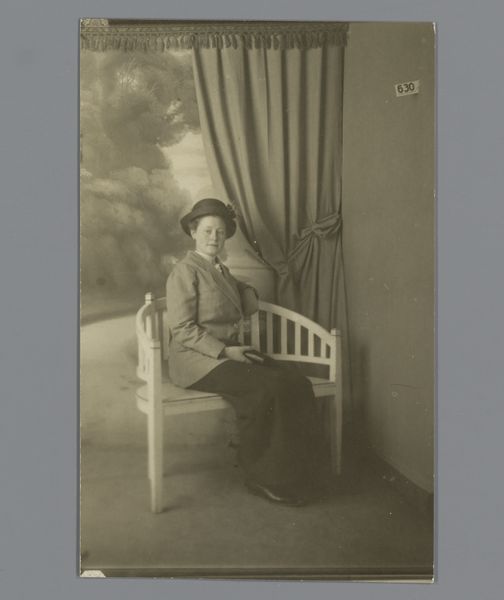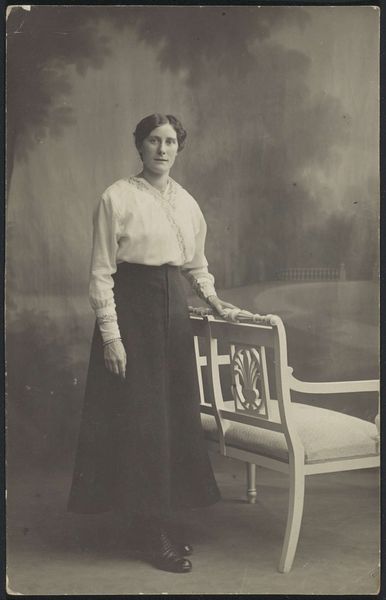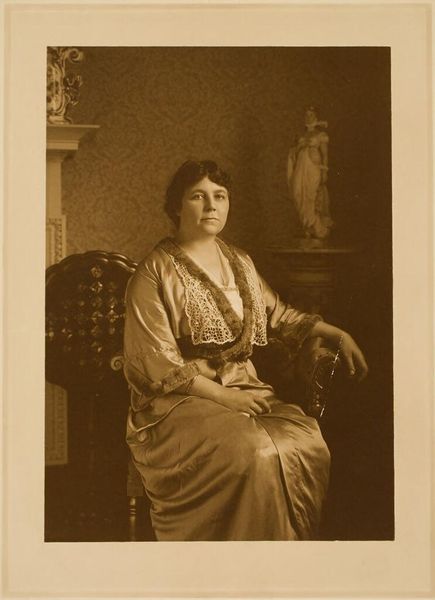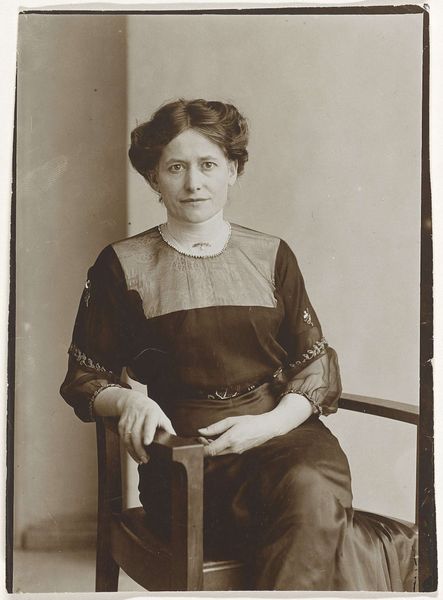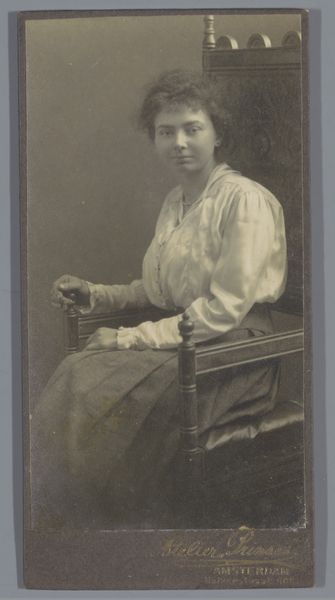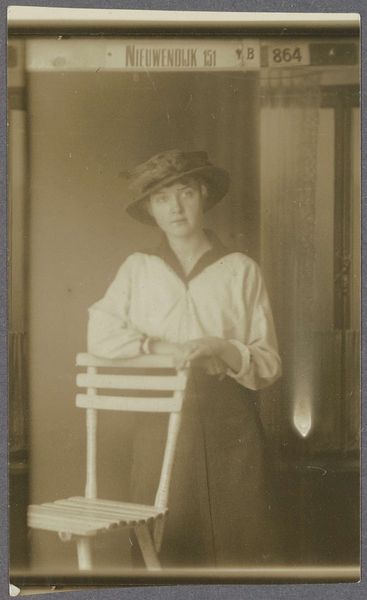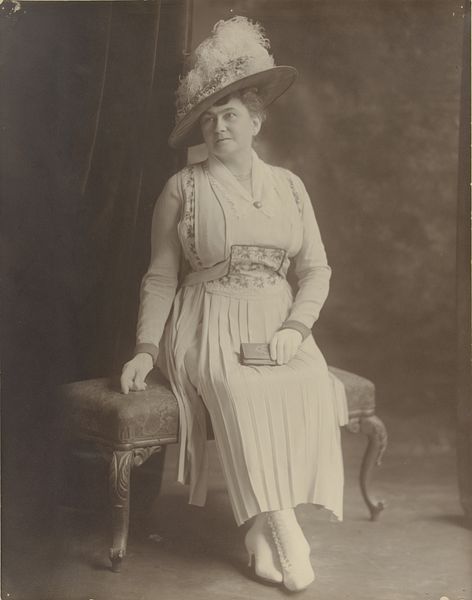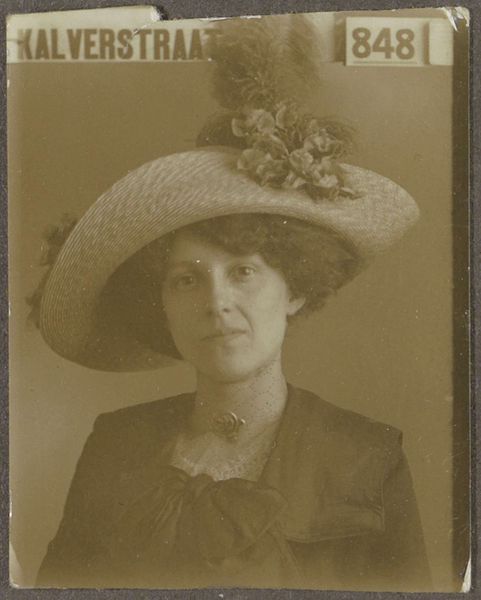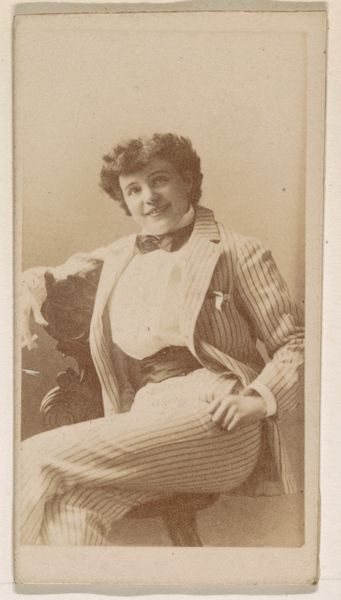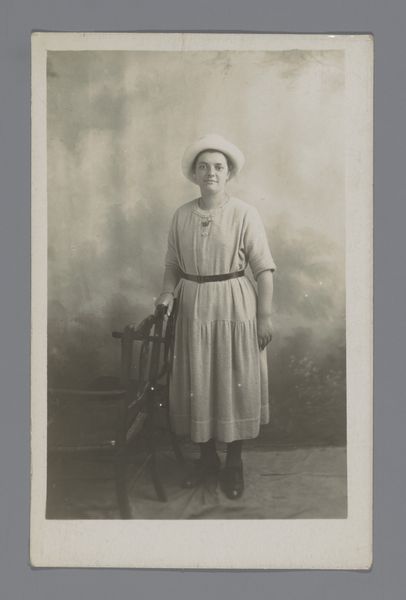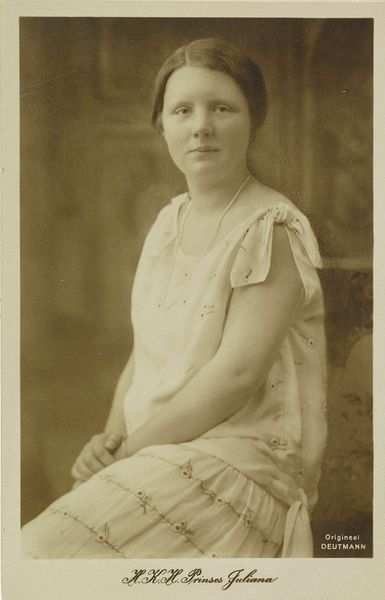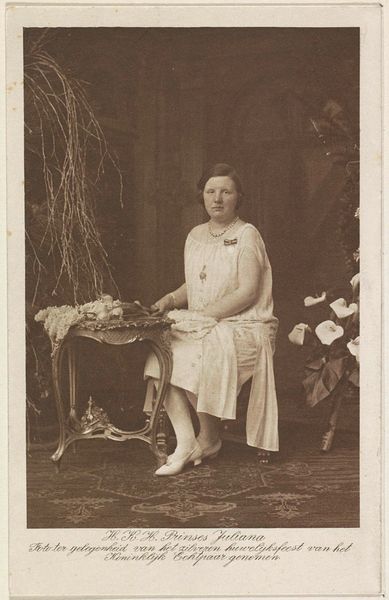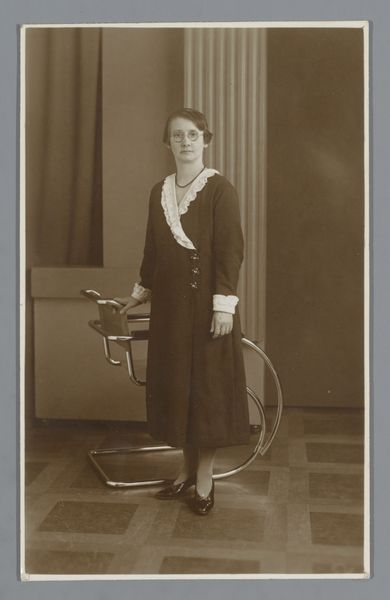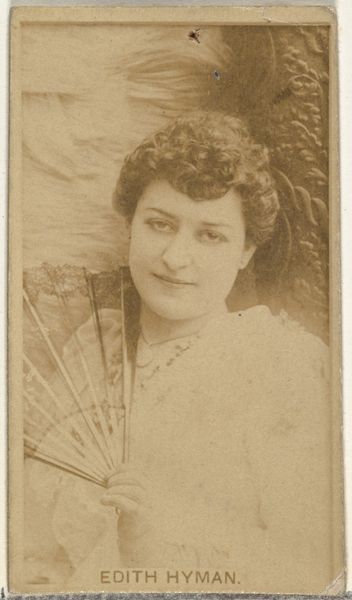
Portret van een vrouw in een rok met knopen en een blouse, zittend c. 1915
0:00
0:00
Dimensions: height 135 mm, width 86 mm
Copyright: Rijks Museum: Open Domain
Editor: So, here we have a vintage photograph, titled "Portret van een vrouw in een rok met knopen en een blouse, zittend," or "Portrait of a woman in a skirt with buttons and a blouse, sitting" dating back to around 1915. It's part of the Rijksmuseum collection, created by American Automatic Fotografie. The photo itself has this incredible, staged theatricality about it... It feels like a snapshot from a play. What story do you think this image tells? Curator: That staged feeling is key. Consider the democratization of portraiture in the early 20th century. Photography became more accessible, moving outside the exclusive realm of the wealthy. Studios like "American Automatic Fotografie" offered ordinary people the chance to participate in image-making, in crafting a public self. Note the backdrop: a painted landscape, the stylized furniture. This isn't simply about recording a likeness; it’s about performing an identity, participating in aspirational social mobility. Why do you think such portrait studios become popular during this period? Editor: I guess it offered a chance for people to create a certain image of themselves that they couldn't otherwise achieve? To participate in some sense of status? Curator: Precisely. It’s about constructing a narrative. The woman’s attire, while modest, is carefully chosen. She is not wealthy, but she wishes to be seen as refined. These mass produced photographic portrait studios provide a new opportunity. The public consumption and creation of images dramatically changes. Editor: That's fascinating! It makes you wonder how self-aware she was being, consciously participating in crafting her identity through the photo. And the backdrop… it feels almost like an early version of Instagram filters. Curator: Exactly! This studio backdrop serves a similar function of constructing a desirable if artificial context around her portrait. This helps frame our understanding of photography's changing role in society. Now, are you starting to think of portrait photography differently than before? Editor: Definitely. I was initially focused on the image itself, but now I see the bigger picture about how people used photography to present themselves in a rapidly changing world. It's far more than just a portrait, it's a socio-cultural document!
Comments
No comments
Be the first to comment and join the conversation on the ultimate creative platform.
